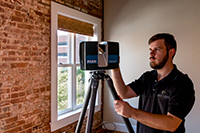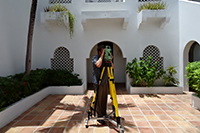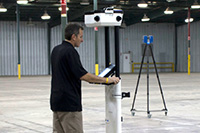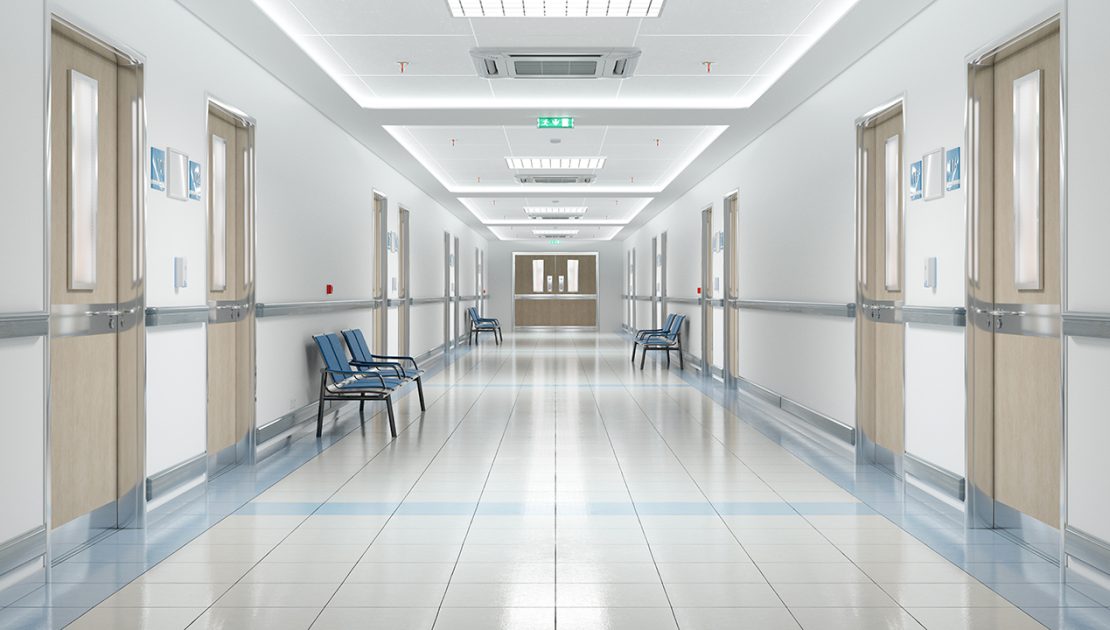The learning curve has been fast and steep over the past few months of the pandemic. Our team at Coast 2 Coast has revamped our processes and work environment/procedures as we consider better ways to keep our professionals safe while delivering the much-needed services to our clients. While true for almost all industries, perhaps the most visible and notable need for change has been seen in the healthcare industry. Hospitals across the nation were just not designed to handle the containment needs or the volume of patients. The battle is on-going.
Much emphasis is on how to reconfigure these facilities. The effort is not only focused on how to meet the demands of today but also how we can become better prepared for events like this in the future. The words agile and flexible are hard to overuse in thinking about how to redesign these hospital and clinical care facilities.
Top 7 Healthcare Facility Redesign Goals:
1 – Infection Prevention
The need to use surfaces that withstand more rigorous cleaning procedures and harsher chemicals are evident. Effective designs will limit the need for contact where possible such as more automated doorways, check-ins, and consults. The incorporation of UV lights and other automated sterilization technology is likely to be considered in high- and medium-risk areas. Designs will have to take into consideration new room turnover processes between patients.
2 – Agile Room Capacity
Designs must enable the quick transformation of designated areas into isolation rooms. The conversion includes easy set-up of additional spaces that are negatively pressurized and cut off from the rest of the hospital or clinic. Designs must accommodate easy access to emergency room facilities as well as trash removal with little to no opportunity of contaminating other areas of the facility.
3 – Donning and Doffing Areas
Special consideration for donning and doffing areas is also a significant factor when a facility converts to handle biocontamination circumstances. Design adjustments must include a unidirectional flow for entering and exiting a room and trash removal of contaminated personal protection equipment (PPE). Other issues, such as the installation of balance aids, may also need to be addressed.
4 – Staff Spaces
Staff spaces are also a concern. Large cohabitated locker rooms may need to give away to smaller, discrete, individual spaces. New designs for break rooms and cafeteria areas reflect the need to ensure safety and encourage social distancing guideline compliance.
5 – Emergency Room, Hospital, and Clinic Entry Triage
The areas just outside emergency room entries and other entrances also require a redesign. While tele-triage systems will help, it will still be necessary to design triage areas around the hospital or clinic in a way that minimizes the opportunity for infection transmission between people. These areas may need to deploy discreet video conference rooms for questioning, admittance, and self-check-in.
6 – Waiting Rooms
Gone will be the days of large waiting rooms with little to no separation of seating. The new waiting room of the future must allow for social distancing in small groups with little to no interaction and contact with others. Physical separation of people will become the goal of a well-designed area.
7 – Burst Rate Capacity
The lessons learned from this pandemic have given new meaning to the need for design flexibility. The fact that a hospital may need to double or even triple in the number of patients that it must treat within a matter of days is daunting. Which areas could convert to ICU rooms, or intermediate care rooms, etc., become part of the equation.
Time is of the Essence
Typically, healthcare trends develop slowly and allow architects and design engineers several years to prototype and develop new protocols. However, in the wake of the current pandemic, this is no longer the case. Peoples’ lives are at stake. The safety of our first responders, nurses, clinicians, and doctors is at risk. Hospital executives, architects, and design engineers must move quickly to protect these critical caregivers and the public at large.
We’re Here to Help
Coast 2 Coast has a team of over 100 professionals skilled in performing mechanical, electrical, and plumbing (MEP) as-built surveys. The team has the field personnel and technology to conduct above-ceiling as well as typical as-built room surveys providing exacting data for the redesign of this critical space.
The field team is skilled in using laser technology, CAD software, as well as mobile containment technology (negative pressure systems for dust containment when opening up ceilings.)
The Coast 2 Coast 3D Modeling teams have MEP expertise. They can quickly render point cloud data into 3D models at the required level of detail and can work in collaboration mode with architects and design engineers on a 24/7 basis.
Coast 2 Coast has invested in virtualization technologies and can quickly scan and render virtual tours of large areas at affordable rates. This enables essential advisors to review and make decisions about the premises without having to visit the facility in person.
The team at Coast 2 Coast conducts over 1800 projects per year ranging from As-Built Surveys, Reality Capture, 3D Modeling, Aerial Surveys, and Laser Scanning. Coast 2 Coast is ready for deployment in preparing the hospitals and healthcare clinics across the country to address the needs of this pandemic and any future threat.




